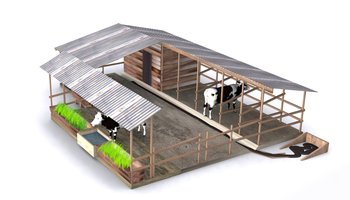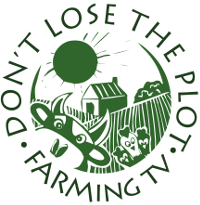Building a cow shed

This is a place for the cows to relax and sleep during the night. Each cow has their own place in the resting area, called cubicle. The cubicles must be covered with a roof made of iron sheets (Mabati), grass thatch or makuti.
The roof must be high enough so that it cannot be eaten by a cow if it is made of grass or if hay is stored under it.
The cubicle should be constructed such that the cow remains clean all the time. Clean the cow shed every day.
A rough concrete floor will stop the cow from slipping. A sloping floor will help waste to drain away Collect it outside the shed.
Clean and disinfect the floor every day. This stops foot rot and abcesses.
A cow needs space to lie down. One should construct the number of cubicles enough to be occupied by animals most of the time. Unoccupied cubicles are a waste of space and money.
 For a given number of cows to a unit, extra cubicles are required to house young-stock (heifers) eg
For a given number of cows to a unit, extra cubicles are required to house young-stock (heifers) eg
- 1 cow 2 cubicles
- 2 cows 3 cubicles
- 3 cows 5 cubicles
- 4 cows 6 cubicles
- 5 cows 7 cubicles
- 6 cows 9 cubicles
A cubicle has a length of 210 cm (7ft) and a width of 120 cm (4 ft). Cubicles are separated from each other by 2 timbers. The cow should not be able to turn around in the cubicle.
Feeds in troughs at least 3 ft above the ground. Fix a mineral block to each cubicle to limit fighting between the animals.
Your cow must always have clean water. Catch rainwater off the roof.






